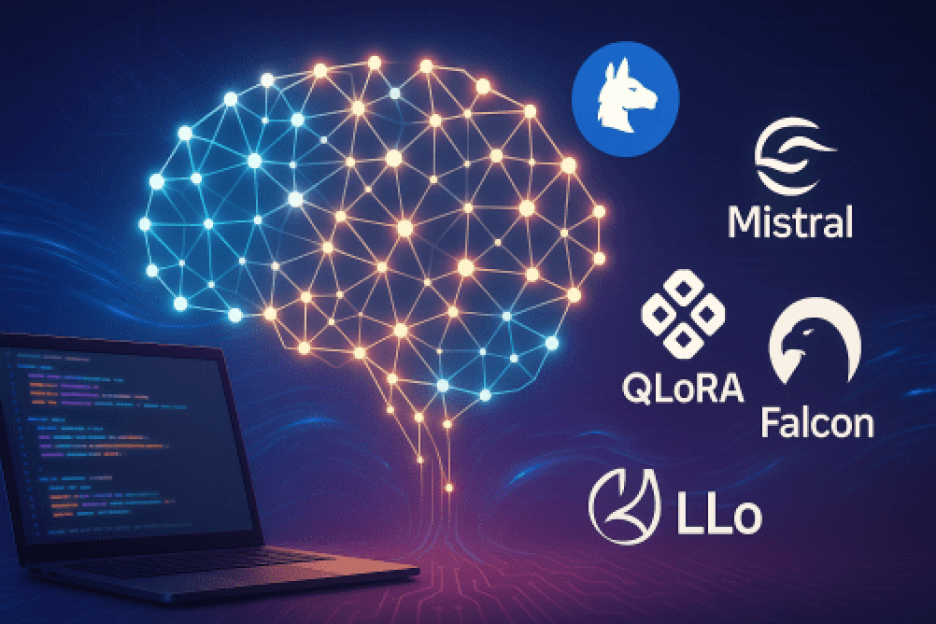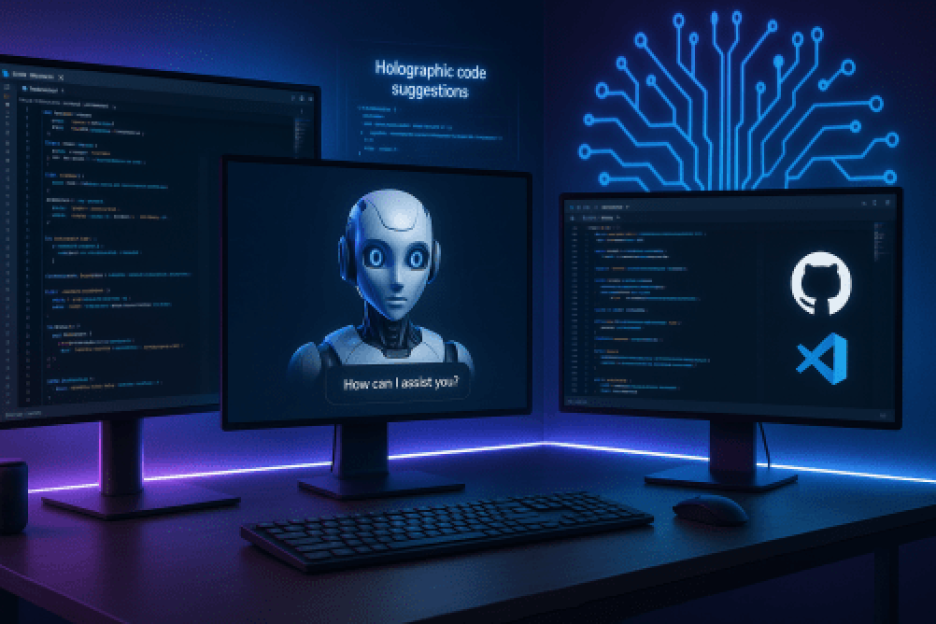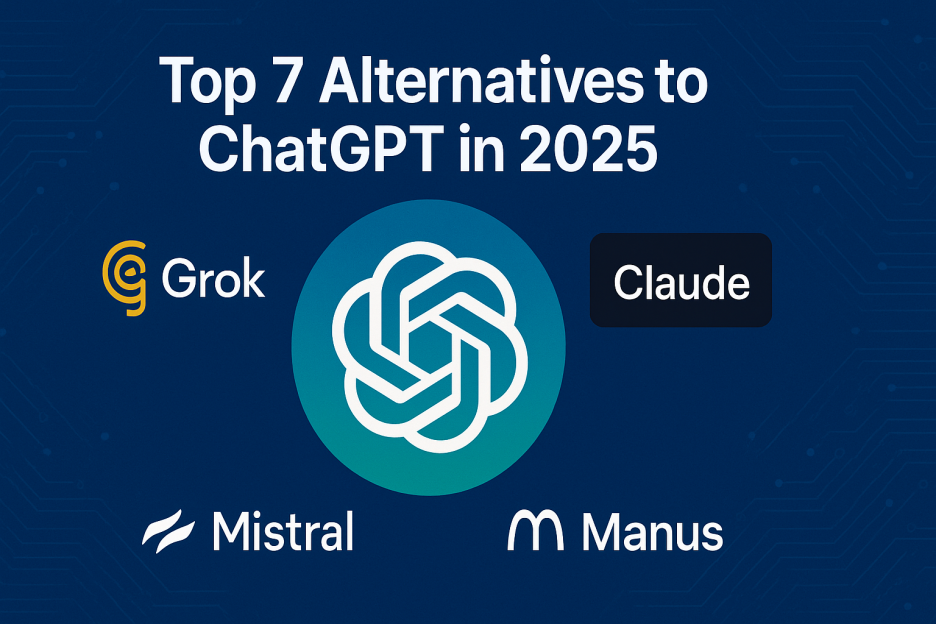Imagine having access to the same powerful AI technology that tech giants use, but completely free and under your control.
No monthly subscriptions, no usage limits, no corporate gatekeepers deciding what you can or can’t do with artificial intelligence.
This isn’t a distant dream - it’s happening right now through open-source AI models that are reshaping how we think about machine learning accessibility.
Key Takeaways
- Open-source AI models offer cost-effective alternatives to proprietary solutions
- LLaMA and its variants provide excellent starting points for most applications
- Proper hardware setup and optimization are crucial for success
- Fine-tuning enables customization for specific use cases
- The community and ecosystem continue growing rapidly
- Ethical considerations and responsible use are paramount
Table of Contents
- Understanding Open-Source AI Models
- Getting Started with LLaMA
- Popular Open-Source AI Models
- Setting Up Your Environment
- Running Models Locally
- Cloud-Based Solutions
- Fine-Tuning and Customization
- Real-World Applications
- Best Practices and Optimization
- Troubleshooting Common Issues
- Future of Open-Source AI
Understanding Open-Source AI Models {#understanding}
Open-source artificial intelligence models represent a fundamental shift in how we access and use AI technology. Unlike proprietary solutions from companies like OpenAI or Google, these models come with transparent code, downloadable weights, and the freedom to modify, distribute, and use them however you see fit.
What Makes Open-Source AI Special?
The beauty of open-source AI lies in its democratization of advanced technology. When Meta released LLaMA (Large Language Model Meta AI), they didn’t just share a product - they shared the blueprint for creating sophisticated language understanding systems. This transparency allows researchers, developers, and enthusiasts to:
- Understand exactly how the model works through accessible code and documentation
- Customize models for specific use cases without vendor restrictions
- Run AI locally without sending sensitive data to external servers
- Avoid subscription fees and usage limitations
- Contribute to model improvements through community collaboration
The Economics of Open-Source AI
Traditional AI services operate on a software-as-a-service model where you pay per token, query, or monthly subscription. Open-source models flip this equation entirely. While you’ll need to invest in hardware or cloud computing resources, the models themselves are free. For businesses processing large volumes of AI requests, this can result in significant cost savings over time.
Getting Started with LLaMA {#getting-started}
LLaMA has become the cornerstone of the open-source AI movement, spawning numerous variants and improvements. Understanding how to work with LLaMA models provides a solid foundation for exploring the broader ecosystem of open-source AI.
LLaMA Model Families
Meta has released several generations of LLaMA models, each with distinct characteristics:
LLaMA 1 (Original)
- Available in 7B, 13B, 30B, and 65B parameter sizes
- Research-focused release with restricted commercial use
- Excellent for experimentation and learning
LLaMA 2
- Commercial-friendly license
- Available in 7B, 13B, and 70B parameters
- Both base and chat-tuned versions
- Improved safety and alignment
Code Llama
- Specialized for programming tasks
- Built on LLaMA 2 foundation
- Supports multiple programming languages
- Available in 7B, 13B, and 34B sizes
Hardware Requirements
Before diving into LLaMA usage, it’s crucial to understand the hardware demands:
Minimum Requirements (7B models):
- 16GB RAM
- Modern CPU (Intel i5 or AMD Ryzen 5 equivalent)
- 50GB free storage space
- Optional: GPU with 8GB VRAM for faster inference
Recommended Setup (13B+ models):
- 32GB+ RAM
- High-end CPU or GPU acceleration
- 100GB+ storage
- Graphics card with 16GB+ VRAM
Professional Setup (70B models):
- 64GB+ RAM or multiple GPUs
- NVMe SSD storage
- Dedicated AI workstation or cloud instance
Popular Open-Source AI Models {#popular-models}
The open-source AI landscape extends far beyond LLaMA, with numerous high-quality alternatives available for different use cases.
Mistral AI Models
Mistral AI has emerged as a leading force in open-source language models, offering impressive performance with efficient resource usage:
Mistral 7B
- Exceptional performance-to-size ratio
- Outperforms many larger models
- Apache 2.0 license for commercial use
- Excellent for general-purpose applications
Mixtral 8x7B
- Mixture of experts architecture
- 47B total parameters, 13B active per token
- Multilingual capabilities
- Superior reasoning and code generation
Code-Specialized Models
For software development and programming tasks, several specialized models excel:
StarCoder
- Trained on permissively licensed code
- Supports 80+ programming languages
- Excellent for code completion and generation
- Available in multiple sizes
WizardCoder
- Fine-tuned specifically for coding tasks
- Strong performance on competitive programming
- Multiple language support
- Regular model updates
Multimodal Models
Modern AI applications often require understanding both text and images:
LLaVA (Large Language and Vision Assistant)
- Combines vision and language understanding
- Built on LLaMA foundation
- Excellent for image analysis and description
- Multiple model sizes available
InstructBLIP
- Advanced visual question answering
- Strong instruction following
- Research and commercial applications
- Robust multimodal reasoning
Setting Up Your Environment {#setup}
Successfully running open-source AI models requires proper environment configuration. This section covers both local and cloud-based setups.
Local Development Environment
Setting up a local environment gives you complete control over your AI models and ensures data privacy.
Python Environment Setup:
# Create a virtual environment python -m venv llama_env source llama_env/bin/activate # On Windows: llama_env\Scripts\activate # Install essential packages pip install torch torchvision torchaudio pip install transformers accelerate bitsandbytes pip install gradio streamlit # For web interfaces GPU Configuration:
For NVIDIA GPUs, ensure CUDA is properly installed:
# Check CUDA availability python -c "import torch; print(torch.cuda.is_available())" # Install CUDA-enabled PyTorch (adjust version as needed) pip install torch torchvision torchaudio --index-url https://download.pytorch.org/whl/cu118 Popular Frameworks and Tools
Several frameworks simplify working with open-source models:
Hugging Face Transformers
- Most popular library for model deployment
- Extensive model hub with thousands of pre-trained models
- Simple API for loading and using models
- Built-in optimization features
Ollama
- User-friendly model runner for local deployment
- Simple command-line interface
- Automatic model downloading and management
- Support for multiple model formats
LM Studio
- Desktop application for running models
- Intuitive graphical interface
- Built-in chat interface
- Easy model management
Text Generation WebUI
- Web-based interface for model interaction
- Advanced configuration options
- Multiple sampling methods
- Extension system for added functionality
Running Models Locally {#running-locally}
Local deployment offers maximum control and privacy but requires careful attention to performance optimization.
Using Hugging Face Transformers
The most straightforward approach uses the Transformers library:
from transformers import AutoTokenizer, AutoModelForCausalLM import torch # Load model and tokenizer model_name = "meta-llama/Llama-2-7b-chat-hf" tokenizer = AutoTokenizer.from_pretrained(model_name) model = AutoModelForCausalLM.from_pretrained( model_name, torch_dtype=torch.float16, # Use half precision device_map="auto" # Automatic device placement ) # Generate text prompt = "Explain quantum computing in simple terms:" inputs = tokenizer(prompt, return_tensors="pt") outputs = model.generate( inputs.input_ids, max_length=200, temperature=0.7, do_sample=True ) response = tokenizer.decode(outputs[0], skip_special_tokens=True) print(response) Optimization Techniques
Running large models efficiently requires several optimization strategies:
Quantization Reduces model memory usage by using lower precision:
from transformers import BitsAndBytesConfig # 4-bit quantization configuration quantization_config = BitsAndBytesConfig( load_in_4bit=True, bnb_4bit_compute_dtype=torch.float16, bnb_4bit_use_double_quant=True, bnb_4bit_quant_type="nf4" ) model = AutoModelForCausalLM.from_pretrained( model_name, quantization_config=quantization_config, device_map="auto" ) CPU Optimization For systems without powerful GPUs:
# CPU-optimized loading model = AutoModelForCausalLM.from_pretrained( model_name, torch_dtype=torch.float32, low_cpu_mem_usage=True, device_map="cpu" ) Command-Line Tools
For quick experimentation, command-line tools offer simplicity:
Using Ollama:
# Install and run Llama 2 ollama pull llama2 ollama run llama2 "Write a Python function to calculate fibonacci numbers" Using llama.cpp:
# Download and convert model git clone https://github.com/ggerganov/llama.cpp cd llama.cpp make # Run with optimizations ./main -m models/llama-2-7b.gguf -p "Your prompt here" -n 128 Cloud-Based Solutions
While local deployment offers privacy and control, cloud solutions provide scalability and reduced hardware requirements.
Free Cloud Options
Several platforms offer free access to open-source models:
Google Colab
- Free GPU access (with limitations)
- Pre-configured Python environment
- Easy sharing and collaboration
- Suitable for experimentation and learning
Kaggle Notebooks
- Free GPU/TPU hours weekly
- Large dataset access
- Competition-focused environment
- Good for model training experiments
Hugging Face Spaces
- Free hosting for model demos
- Gradio and Streamlit integration
- Community sharing
- Automatic scaling
Paid Cloud Services
For production applications, paid services offer reliability and performance:
RunPod
- GPU rental service
- Flexible pricing models
- Pre-configured environments
- Suitable for intensive workloads
Vast.ai
- Decentralized GPU marketplace
- Competitive pricing
- Various hardware options
- Good for cost-sensitive projects
Amazon SageMaker
- Managed ML platform
- Integrated with AWS ecosystem
- Auto-scaling capabilities
- Enterprise-grade security
Deployment Strategies
Choosing the right deployment approach depends on your specific needs:
Development and Experimentation:
- Local setup with smaller models
- Free cloud platforms for testing
- Jupyter notebooks for interactive development
Small-Scale Production:
- Dedicated cloud instances
- Container-based deployment
- Load balancing for multiple users
Enterprise Applications:
- Multiple GPU clusters
- Kubernetes orchestration
- Advanced monitoring and logging
Fine-Tuning and Customization
One of the greatest advantages of open-source models is the ability to customize them for specific tasks and domains.
Understanding Fine-Tuning
Fine-tuning involves training a pre-trained model on task-specific data to improve performance for particular applications. This process is much faster and requires less data than training from scratch.
Types of Fine-Tuning:
Full Fine-Tuning
- Updates all model parameters
- Requires significant computational resources
- Best performance for specific tasks
- Most resource-intensive approach
LoRA (Low-Rank Adaptation)
- Updates only a small subset of parameters
- Much more efficient than full fine-tuning
- Good balance of performance and efficiency
- Popular for personal and small-scale projects
QLoRA (Quantized LoRA)
- Combines quantization with LoRA
- Extremely memory efficient
- Enables fine-tuning on consumer hardware
- Slight performance trade-off for efficiency
Practical Fine-Tuning Example
Here’s a simplified example using the PEFT library for LoRA fine-tuning:
from peft import LoraConfig, get_peft_model, TaskType from transformers import TrainingArguments, Trainer # LoRA configuration lora_config = LoraConfig( task_type=TaskType.CAUSAL_LM, inference_mode=False, r=8, # Rank lora_alpha=32, # Alpha parameter lora_dropout=0.1, # Dropout target_modules=["q_proj", "v_proj"] # Target attention layers ) # Apply LoRA to model model = get_peft_model(model, lora_config) # Training arguments training_args = TrainingArguments( output_dir="./results", num_train_epochs=3, per_device_train_batch_size=4, gradient_accumulation_steps=4, warmup_steps=500, max_steps=1000, learning_rate=5e-4, fp16=True, logging_steps=10, ) # Create trainer and start training trainer = Trainer( model=model, args=training_args, train_dataset=train_dataset, tokenizer=tokenizer, ) trainer.train() Data Preparation
Successful fine-tuning requires high-quality, task-specific data:
Data Collection:
- Gather examples representative of your use case
- Ensure data quality and accuracy
- Include diverse examples to prevent overfitting
- Consider data licensing and privacy requirements
Data Formatting: Most fine-tuning frameworks expect specific formats:
{ "instruction": "Translate the following English text to Spanish:", "input": "Hello, how are you today?", "output": "Hola, ¿cómo estás hoy?" } Data Augmentation: Increase dataset size and diversity:
- Paraphrasing existing examples
- Synthetic data generation
- Cross-validation techniques
- Active learning approaches
Real-World Applications
Open-source AI models excel in numerous practical applications across industries and use cases.
Content Creation and Writing
Blog and Article Writing: Open-source models can assist with content creation, from generating outlines to writing complete articles. They’re particularly useful for:
- SEO-optimized content generation
- Technical documentation
- Creative writing assistance
- Social media content
Code Generation and Programming: Specialized models like Code Llama excel at:
- Automated code completion
- Bug detection and fixing
- Code explanation and documentation
- Algorithm implementation
Business Applications
Customer Service Automation: Fine-tuned models can handle customer inquiries:
- FAQ responses
- Ticket classification
- Sentiment analysis
- Multilingual support
Data Analysis and Reporting: AI models can process and summarize data:
- Report generation
- Trend analysis
- Data visualization assistance
- Business intelligence insights
Educational Applications
Personalized Learning: Open-source models enable customized educational experiences:
- Adaptive tutoring systems
- Homework assistance
- Language learning tools
- Subject-specific explanations
Research Assistance: Academic and research applications include:
- Literature review assistance
- Hypothesis generation
- Data interpretation
- Citation management
Creative Industries
Content Production: Creative professionals use AI for:
- Script writing and storytelling
- Music composition assistance
- Visual art concept generation
- Marketing copy creation
Game Development: Gaming applications include:
- NPC dialogue generation
- Quest and story creation
- Procedural content generation
- Player behavior analysis
Best Practices and Optimization
Successful deployment of open-source AI models requires attention to performance, security, and ethical considerations.
Performance Optimization
Memory Management: Efficient memory usage is crucial for running large models:
# Clear GPU cache torch.cuda.empty_cache() # Use gradient checkpointing model.gradient_checkpointing_enable() # Enable memory efficient attention model.config.use_cache = False Inference Optimization: Speed up model responses:
- Use appropriate batch sizes
- Implement caching for repeated queries
- Consider model pruning techniques
- Optimize hardware utilization
Monitoring and Logging: Track model performance:
- Response times and throughput
- Memory and GPU utilization
- Error rates and types
- User satisfaction metrics
Security Considerations
Data Privacy: Protect sensitive information:
- Implement data anonymization
- Use secure communication protocols
- Regular security audits
- Compliance with privacy regulations
Model Security: Protect against attacks:
- Input validation and sanitization
- Rate limiting and abuse prevention
- Model versioning and rollback capabilities
- Regular security updates
Ethical AI Practices
Bias Mitigation: Address potential biases:
- Diverse training data
- Regular bias testing
- Fairness metrics monitoring
- Inclusive development practices
Responsible Deployment: Ensure ethical use:
- Clear usage guidelines
- Transparency about AI involvement
- Human oversight and control
- Regular impact assessments
Troubleshooting Common Issues
Working with open-source AI models can present various challenges. Here are solutions to common problems:
Installation and Setup Issues
CUDA/GPU Problems:
# Check CUDA installation nvidia-smi # Verify PyTorch GPU support python -c "import torch; print(torch.cuda.is_available())" # Reinstall with correct CUDA version pip uninstall torch torchvision torchaudio pip install torch torchvision torchaudio --index-url https://download.pytorch.org/whl/cu118 Memory Errors:
- Reduce batch size
- Use model quantization
- Enable gradient checkpointing
- Consider model sharding
Slow Performance:
- Check hardware utilization
- Optimize batch processing
- Use appropriate data types
- Consider hardware upgrades
Model Loading Issues
Missing Model Files:
# Verify model availability from huggingface_hub import list_repo_files files = list_repo_files("meta-llama/Llama-2-7b-hf") print(files) # Download manually if needed from huggingface_hub import snapshot_download snapshot_download("meta-llama/Llama-2-7b-hf") Permission Errors: Some models require access approval:
- Request access through Hugging Face
- Use access tokens for authentication
- Verify license compliance
Runtime Problems
Out of Memory Errors:
# Use smaller precision model = model.half() # float16 # Enable CPU offloading model = AutoModelForCausalLM.from_pretrained( model_name, device_map="auto", offload_folder="offload" ) Quality Issues:
- Adjust generation parameters
- Fine-tune for specific tasks
- Use appropriate prompting techniques
- Consider model alternatives
Future of Open-Source AI
The open-source AI landscape continues evolving rapidly, with several exciting trends shaping its future.
Emerging Model Architectures
Mixture of Experts (MoE): Models like Mixtral demonstrate how MoE architectures can provide excellent performance with efficient resource usage. Future developments will likely see:
- More sophisticated expert routing
- Dynamic expert selection
- Improved training techniques
- Better hardware optimization
Multimodal Integration: The future belongs to models that seamlessly handle multiple data types:
- Text, image, and audio understanding
- Real-time multimodal processing
- Cross-modal reasoning capabilities
- Enhanced creative applications
Hardware Developments
Specialized AI Chips: New hardware designed specifically for AI workloads will make open-source models more accessible:
- Neural processing units (NPUs)
- Edge AI accelerators
- Quantum computing integration
- More efficient memory architectures
Distributed Computing: Decentralized approaches to AI computation will enable:
- Community-powered model inference
- Blockchain-based AI networks
- Federated learning systems
- Democratized access to computing power
Community and Ecosystem Growth
Model Democratization: Open-source AI will become increasingly accessible:
- User-friendly deployment tools
- No-code model customization
- Automated optimization techniques
- Simplified fine-tuning processes
Collaborative Development: The community-driven nature of open-source AI will foster:
- Faster innovation cycles
- Diverse perspective integration
- Reduced development costs
- Enhanced model safety and alignment
Regulatory and Ethical Considerations
AI Governance: As open-source AI becomes more powerful, governance frameworks will evolve:
- Standardized safety protocols
- Ethical use guidelines
- Transparency requirements
- International cooperation frameworks
Responsible Innovation: The community will increasingly focus on:
- Bias reduction techniques
- Environmental impact minimization
- Privacy-preserving technologies
- Inclusive development practices
Conclusion
Open-source AI models like LLaMA represent more than just free alternatives to proprietary solutions - they embody a fundamental shift toward democratized artificial intelligence. By understanding how to effectively use these models, you’re not just gaining access to powerful technology; you’re joining a movement that prioritizes transparency, collaboration, and innovation.
The journey from downloading your first model to deploying sophisticated AI applications may seem daunting, but the rewards are substantial. Whether you’re a developer looking to integrate AI into applications, a researcher exploring new possibilities, or a business owner seeking cost-effective solutions, open-source AI models provide the tools and flexibility to achieve your goals.
As this technology continues to evolve, the gap between open-source and proprietary AI capabilities will only narrow. By starting your open-source AI journey today, you’re positioning yourself at the forefront of this technological revolution. The models, tools, and techniques covered in this guide provide a solid foundation, but remember that the open-source AI community is your greatest resource.
Stay curious, experiment freely, and contribute back to the community that makes all of this possible. The future of AI is open, and it’s in your hands.
Next Steps
- Choose your first model based on your hardware capabilities and use case
- Set up your development environment using the tools and frameworks discussed
- Start with simple experiments to familiarize yourself with the technology
- Join the community through forums, Discord servers, and GitHub projects
- Consider fine-tuning once you’re comfortable with basic usage
- Stay updated with the latest developments and model releases
Resources for Continued Learning
- Hugging Face Model Hub: Comprehensive repository of open-source models
- Papers with Code: Latest research and implementation details
- Reddit Communities: r/MachineLearning, r/LocalLLaMA for discussions
- YouTube Channels: Technical tutorials and model comparisons
- GitHub Repositories: Open-source tools and example implementations
The world of open-source AI is vast and constantly expanding. This guide provides the foundation, but your journey is just beginning. Embrace the learning process, connect with the community, and start building the AI-powered future you envision.






